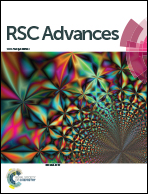Utilization of tungsten trioxide nanoparticles and nickel oxide pillared montmorillonite nanocomposites for the adsorption of the drug dexamethasone from aqueous solutions
Abstract
The present study was undertaken to expand an impressive adsorbent and to study the adsorption process captivated in the adsorption of the drug dexamethasone from aqueous solution using the tungsten trioxide (WO3) nanoparticles and nickel oxide pillared montmorillonite (NiO/MMT) nanocomposites. Parameters such as pH, contact time, ionic strength and adsorbent concentration, and temperature were also studied. The adsorption data coordinated well with the Langmuir, Freundlich and Fakhri models. However, the Langmuir isotherm displayed a better fitting model than the other isotherms because of the higher correlation coefficient that the antecedent exhibited; thus, indicating the applicability of monolayer coverage of the drug dexamethasone on the surface of an adsorbent. The adsorption process was found to follow pseudo-second-order kinetics. The principal thermodynamic parameters such as Gibbs free energy (ΔG), enthalpy change (ΔH) and entropy change (ΔS) were calculated. The positive value of ΔH and negative value of ΔG show the endothermic and spontaneous nature of adsorption, respectively. The isosteric heats of adsorption (ΔHX) were calculated and indicated that the mechanism of adsorption was a physical process.


 Please wait while we load your content...
Please wait while we load your content...